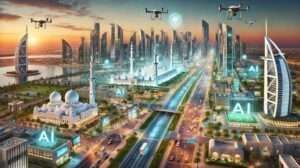Washington DC
In the fast-paced world of global affairs, events unfold in nanoseconds. To truly understand the shape of our world, one must go beyond mainstream media narratives and curated expert panels. I often rely on a deep network of extraordinary individuals and unconventional sources — ones that professional geopolitical analysts often overlook or dismiss. Lately, my focus has been drawn toward Russia, Ukraine, and Azerbaijan. But in this era of multipolar realignments, no analyst can ignore the looming giant: China.
What I recently uncovered reveals more than just a stalled infrastructure project — it reveals the unraveling of a global superpower’s economic mask.
A Hidden Behemoth: The Tongshe River Super Bridge.
Tucked away in the rugged terrains of Zhenxiong County, Yunnan Province, lies a project so massive that it rivals the scale of the Three Gorges Dam — the Tongshe River Super Bridge. Planned as a key link in the Zeni Expressway, the bridge was designed to span 1,458 meters, anchored by 22 towering piers. The tallest of them reaches a staggering 222 meters — making it the tallest bridge pier under construction in all of Asia.
Costing a jaw-dropping $1.8 billion, this bridge was hailed as one of the most ambitious infrastructure undertakings in Chinese history, second only to the Great Wall in symbolic significance. But there’s a reason you’ve never heard of it.
A Monument to Economic Decline.
Despite the Chinese Communist Party’s massive propaganda machine, this bridge has been kept out of public discourse — both inside and outside China — for good reason. The project has been completely stalled since 2022. Cranes hang motionless, towering concrete pillars stand half-built and weathered, and vast stretches of unpaved roads lead to nowhere. Tunnel systems lie abandoned and crumbling. Rusting equipment litters the site like tombstones to a failed dream.
But this isn’t just about one bridge. The implications are seismic.
Yunnan Province, where the bridge is located, now suffers from a debt-to-GDP ratio of 612.6%, largely due to this single project. For context, the average debt-to-GDP ratio among Chinese provinces is already dangerously high at 120%. This project alone has pushed Yunnan into economic peril — and it’s a microcosm of the larger structural rot eating away at the Chinese economy.
The Emperor Has No Clothes.
What makes this failure more jarring is the irony: while China pours billions into the Belt and Road Initiative (BRI) — funding flashy railways and ports across Asia, Africa, and Latin America — it cannot pay to complete a critical internal project. The CCP is prioritizing global optics over internal functionality, masking deep economic dislocation with international grandstanding.
Despite being launched in 2016, the Tongshe River Super Bridge has seen no progress in over three years. Its condition today resembles a post-apocalyptic landscape. Crumbling concrete, unfinished spans, and deserted machinery stand as symbols of a government whose financial strategy is stretched to the breaking point.
If this were happening in California, it would make the infamous high-speed rail debacle look like a rounding error — a waitress’s tip compared to this fiscal monstrosity.
Why It Matters.
The Chinese Communist Party continues to project strength and prosperity through controlled narratives and overseas investments. But behind that façade, projects like the Tongshe River Super Bridge expose a country grappling with unsustainable debt, economic stagnation, and internal mismanagement. It is a window into the true state of the CCP’s health — and it’s not just bad, it’s catastrophic.
As the world grapples with an uncertain future, understanding China’s real economic condition is essential. Not the numbers crafted for global conferences or the polished white papers, but the real conditions on the ground — the kind that leave massive pillars to rot in silence.
Sometimes, a picture is worth a thousand words, and the image of this abandoned super-bridge might just speak louder than all the official statements coming out of Beijing.















